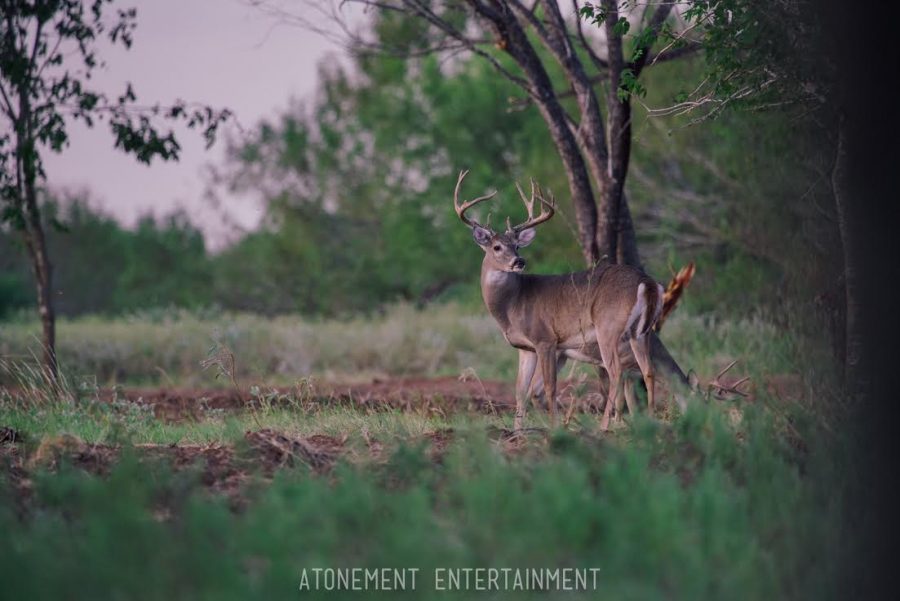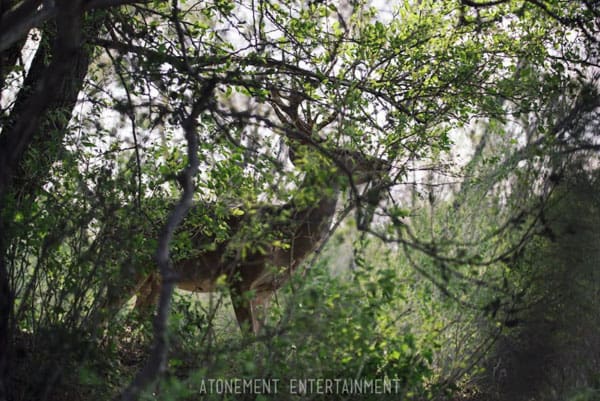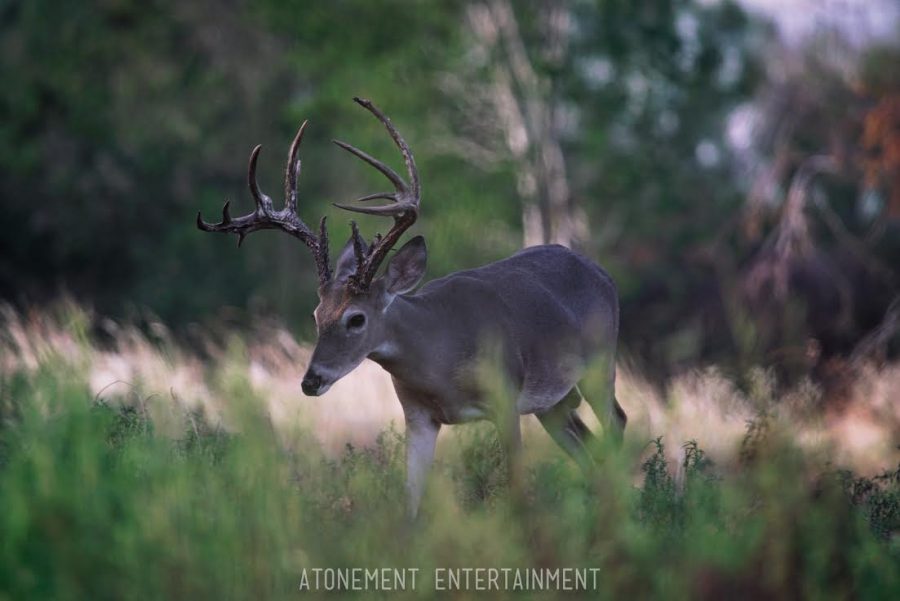All summer long, deer carelessly present themselves in ideal hunting spots. Then, as hunting season approaches, they seem to disappear into thin air. There are a lot of reasons why this happens. First and hopefully most obvious is YOU.
Deer have very keen senses. Sensibly enough, they sense man’s presence as a threat. All of a sudden, after a long summer spent roaming freely, they’re sensing increased human activity in their home. Checking game cams more frequently, feeding them in designated areas, clearing firing lanes, etc. All this bipedal commotion alerts them to their impending doom.
The second reason for deer disappearance: food. Just as humans pack on the pounds during the fall and winter months, deer put on weight in preparation for colder weather. They crave less of the grasses and plants of spring and summer, and more of the fatty foods they love.
Unfortunately, these foods are often found deep in the woods; the deer have no need to venture out into your crosshairs to get it. When there’s an abundance of acorns on the ground, for example, deer are far less likely to seek out open food sources.

Hunting is a sport of both skill and luck. Although there’s no ultimate solution to the disappearing deer problem, there are a few things you can do to up your odds of taking a deer.
Visiting feeders and whitetail deer hunting property on a regular basis will, at least in theory, decrease deer anxiety. On ranches, deer become accustomed to the sounds of trucks and people, often associating the noise with a dinner bell.
If, however, you’ve left your property untouched for months at a time, then suddenly appear, the deer will get spooked. They may not venture out during daylight, becoming nocturnal during hunting season.
You also need intel. Get to know the game trails, bedding areas, water sources and food on your hunting property. Game cams can help you get a feel for the deer’s ever-changing patterns. Where to hunt…as Professor Harold Hill learned, you gotta know the territory.
Generally speaking, deer have to feel safe enough to venture out of their hiding spots. By placing your stand near some heavy brush you can better disguise your movements, giving yourself a greater opportunity to take deer as they exit the woods. Sometimes the animals tend to linger on the edge of an open field, behind cover, for long periods, waiting for the right moment.
If deer sense anything amiss, they’re gone. That’s why I’m a true believer in STFU stealth and scent-free products. I walk extremely quietly at all times, don’t engage in small talk with my hunting partner, and use scent hiders even when I’m checking cams and feeders, or walking near my hunting spots.
Yes, I’ve heard a million stories of hunters who’ve managed to shoot a deer even after a coughing fit, a misfire, and where their scent wasn’t disguised. The first buck I ever harvested I shot without ever having set foot on the property, after my partner tripped in the woods, making all kinds of noise.
My conclusion: a deer isn’t afraid of what he knows. If you’ve educated deer to your presence all year, then almost nothing you can do will spook him — at least for a moment, while he’s trying to understand loud noises and weird smells, and what they mean. And a moment is all you need.
If deer aren’t desensitized to your presence, you have to do your best to become invisible. Just like the deer.






There’s another reason that early in the season, especially in early rut, that the deer tend to disappear. The raging hormones of the bucks. All of those bucks that used to hang out together, away from the females in bachelor groups, once the light changes and those antlers harden up, they become different beasts entirely. Now, instead of being all chill with their bros, they have to be wary of a beat down from those same springtime friends. That wariness carries over into every place they go, and everything they do.
On top of that, after a doe is bred, she is often uninterested in being repeatedly bred by every male that gets near her. That leaves the does more cautious as well, and willing to hunker down until later in the dark to forage, which gets the bucks out there even later than that.
Plus, bucks just care less about food. They will lose as much as 30% of their mass during mating season, skipping sleep, skipping food, just to find those does. So those same plots they went to 100 times, they may never see again until after the new year.
“They will lose as much as 30% of their mass during mating season, skipping sleep, skipping food, just to find those does.”
When I was preoccupied with finding human “does,” I would lose as much as 30% of my income.
MY chuckle for the day
You were 70% ahead of me.
Bahahaha!
Very good points
In my opinion, early season deer are not rut-driven.. while it is true their testosterone is increasing they are still going to gain 25-30% of their body mass before they hit the rut… at this time they are eating and not yet concerned with love.. especially in warmer temps they hit the rut much later in season
The dropping temperatures change hunter behavior, but have little effect on the white tail rut. As with pretty much all mammals, those hormone changes are signaled by changes in the light, not in temperature. There’s been a lot of good studies on this, and when you think about it from a natural selection standpoint, it’s the only thing that makes sense. I’ve hunted Kansas, Missouri, and Nebraska, and up there they could tell me accurately within just a few days when that rut would kick in. It was clockwork, like the sun.
Here in Texas, we have several established ruts, and the variation largely depend on the genetics of the herd. It will occur all the way from mid October (where I am) to mid November, or even mid December for South Texas, regardless of when the first cold snap hits.
https://www.qdma.com/triggers-whitetail-rut/
http://tpwd.texas.gov/huntwild/hunt/planning/rut_whitetailed_deer/
All these are very good points but here in Florida the seasonal change is not so much temp drop as it is shortening daylight hours and that strong rut. The rut is what usually takes the bucks to different t territories here and as far as foraging harder and packing on winter pounds, not so much the determined I g factor here as the temps are no where near freezing most winters! Seldom do we see temps of lower than 40 degrees. We do get freezes but not anything substantial.
I desensitize deer by placing the feeder about 75yds from my shooting range berm. No kidding, I’ve been out sighting in my deer rifle with a couple does grazing on corn just 50yds behind and to the right of me. I’m out in that area of the property enough that they’re used to vehicle and foot traffic, and they tolerate it because they’re hungry little punks that like free corn.
Little punks that like free corn
Are you saying that deer are democrats?
Hey! That’s uncalled for, deer aren’t nearly as despicable as democrats.
The herd around here can tell when a dog is on a leash. When restrained, the deer almost ignore the dog and walker down to about 20 feet. But if the dog moves freely, the deer keep an honest 50 yards away.
You are touching upon something that Ms. Austin did not cover. I believe deer are actually quite good at discerning nonchalant behavior from hunting behavior.
A dog which is running free is potentially hunting. A dog on a leash is following the owner and their entire presence is obviously uninterested in any deer in the vicinity. And a deer sees a person who is stalking through the woods as, well, stalking.
Case in point: when I was in high-school, we would ride up within 50 yards of deer on all-terrain cycles and the deer never cared at all. But, put on some blaze orange, have a firearm in hand, and walk/slink along slowly and quietly and those deer would take off when you were still 150 yards away.
I won’t lie that’s super effing interesting, I need to move out of the city one day.
The bachelor groups always break up late summer , early fall .
True most important factor is of course hunting the wind, never use a stand if the wind is wrong , both for hunting and approach .
Baiting is not legal where I hunt , much less feeders.
Feeders are a blessing and a curse in Texas
All I do is take a walk in the heaviest, nastiest cover I can find until I come upon animal trails or other sign. Then I find a comfortable spot that will break up my outline, sit down, get comfy and STFU. After 20 minutes or so the land will just come to life. Birds, mammals, rodents, everything will just forget you are there and start moving around you and doing their thing, whatever that is. Then you observe until you see something worth stalking. I’ve had whitetail walk right up to within 20 feet of me and stare at me, wondering what the F is up here? Usually smaller deer I’m not interested in though. Once I had a spike buck doing that at me about 25 yards off while a grandaddy that I was interested in stood off about 200 yards away sniffing and observing. I wanted the baby to go away but didn’t dare move or scare the big one away. Finally I just made a little woof noise at him and he sure did a double take and split in a hurry. It didn’t scare off the big one, but he wouldn’t come any closer either. He ended up wondering off in the other direction, and after an hour or two of stalking him I lost him anyway. It was sure funny watching the look on that spikes face though! You can’t roll sevens every try. Sometimes you just crap out.
Being still and quiet is the key. They need to forget you are there, and that wont happen if you keep shifting around and smoking cigarettes! That is why the spot must be comfortable. I never bother with camo or tree stands or prepared blinds or any of that. Just a rucksack with a thermos of coffee and some kit for emergencies. I like to travel light, and the older I get the lighter I like it.
Agreed. I used to go overboard with the packing now I barely pack anything at all
“Know your quarry” is as applicable to today’s hunter as it was to Unkas ! Decreasing daylight triggers esters in does and amps up testosterone in bucks . Frost thins green cover and makes the environment noisier . Even dense cover gets more open ! Both sexes become more cautious, but if bucks are your target, you can use their drives to bring them to you. If you “rattle” do so with a buck call in your mouth and beat the hell out of the area, with lots of grunts and bleats and tine on tine ( use small tines from immature bucks ) rattling for 5 minutes then out with a submissive beat or two and STFU and stay still and listen. ( Best done along a mature buck’s scrape line.) Deer don’t fight or run long as they overheat easily. But back to the opener, all deer become conditioned by their environment and an astute observer can readily “suss out”, how to ambush them, or learn to “walk them up” .
Accustomization is key. There’s a guy in this area who actually rides a small motorcycle around in the hills and moves right with one elk herd, and so long as he doesn’t go fast they just snort and ignore him because he’s there a couple of days or more a week just about all year. He rides with a rifle slung on his back, and stops now and then to take it off, lay it in his lap, prop it against his knee while he takes a drink of coffee, so the rifle doesn’t bother them either. He even sights in on things and they get used to that!
Then come hunting season he just picks the one he wants and takes it at about twenty-five yards. The crazy thing is that though the shot spooks the rest, when he’s back the next week they quickly adjust to the familiar sight and sound.
I keep wishing I could get the sort of disability status he has that lets him hunt from a motorcycle!
Deer are funny, i dont hunt on my Back 40, i do target shoot. The last time i was out shooting i announced i was about to target shoot, just in case i dint see any trespassers before hand, sure enough a deer’s head popped near the mound of dirt i shoot at, while chewing the deer just gave me a look, and walked away not worried about a thing.
I killed a doe last week on my property in an open field at 6:00pm. Every night at 6:00pm these two does would come out into the field to eat. After eating dinner myself I would get out to my blind or stand around 6:10-6:20 and they were already there. Same with the previous week checking my camera on the 4 wheeler. They would totally ignore me and my kids on the 4 wheeler and just watch us. We’d stop and watch them, then replace the chip in my camera and drive back home without them every leaving the field. Finally, last Monday I ate dinner early, grabed the rifle and me and my 8 yr old daughter headed out to a double stand on that field. Like clock work they showed up at 6:00pm and I shot one. Meat in the freezer. The does seem to condition easier than the bucks.
It’s kinda amusing. There are two types of people here.
The hunter: who only cares about the kill and meat in the freezer.
And
The Sportsman: who is more interested in the experience and the story than actually bagging and animal easily.
Deer meat is all I care about.